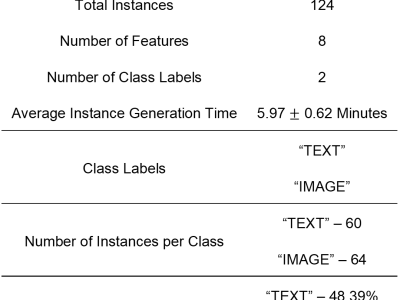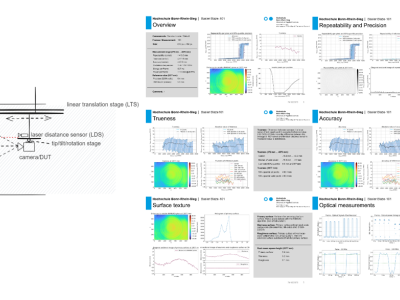VIS-iTrack Dataset for Visual Intention detection through Eye Gaze

- Citation Author(s):
-
Sayed Hussain (Islamic University of Technology (IUT))Husne Rubaiyeat (National University)Kamrul Hasan (Islamic University of Technology (IUT))
- Submitted by:
- Ridwan Kabir
- Last updated:
- DOI:
- 10.21227/rp3f-f891
- Data Format:
 652 views
652 views
- Categories:
- Keywords:
Abstract
Human intention is an internal, mental characterization for acquiring desired information. From
interactive interfaces, containing either textual or graphical information, intention to perceive desired
information is subjective and strongly connected with eye gaze. In this work, we determine such intention by
analyzing real-time eye gaze data with a low-cost regular webcam. We extracted unique features (e.g.,
Fixation Count, Eye Movement Ratio) from the eye gaze data of 31 participants to generate the dataset
containing 124 samples of visual intention for perceiving textual or graphical information, labeled as either
TEXT or IMAGE, having 48.39% and 51.61% distribution, respectively. Using this dataset, we analyzed 5
classifiers, including Support Vector Machine (SVM) (Accuracy: 90.13%).
Instructions:
1 FEATURES:
i. MAX_FC_R: Maximum (MAX) Fixation Count (FC) of the Right (R) eye.
ii. MAX_FC_L: Maximum (MAX) Fixation Count (FC) of the Left (L) eye.
iii. MIN_FC_R: Minimum (MIN) Fixation Count (FC) of the Right (R) eye.
iv. MIN_FC_L: Minimum (MIN) Fixation Count (FC) of the Left (L) eye.
v. AVG_FC_R: Average (AVG) Fixation Count (FC) of the Right (R) eye.
vi. AVG_FC_L: Average (AVG) Fixation Count (FC) of the Left (L) eye.
vii. MR_R: Ratio of Horizontal vs Vertical Movement counts of the Right (R) eye.
viii. MR_L: Ratio of Horizontal vs Vertical Movement counts of the Left (R) eye.
2 Label:
I. T: indicates that the generated feature vector is determining visual intention as textual.
II. I: indicates that the generated feature vector is determining visual intention as graphical.








